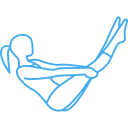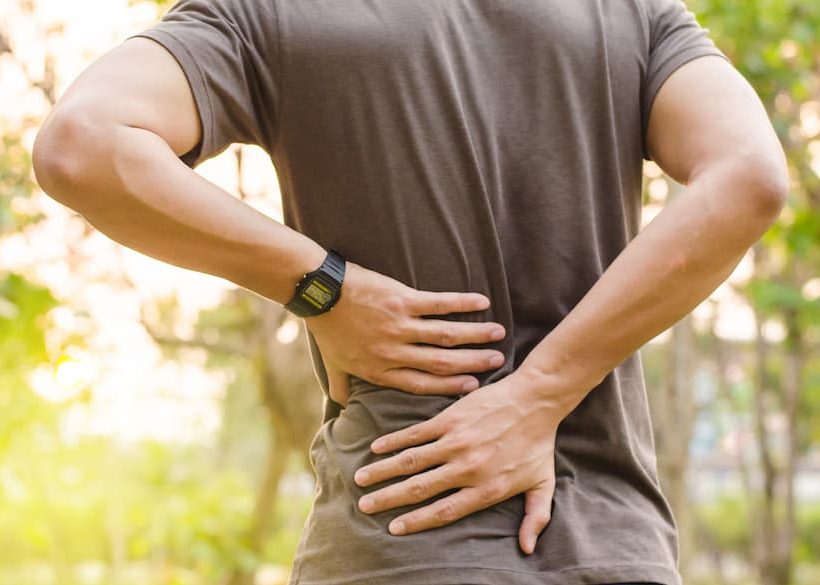Here is a list of the common injuries and conditions we treat. We are adding content for each injury over time and you can see our blog page for information on how we treat other conditions. Feel free to reach out if you have any questions, prior to booking your assessment.
- Hamstring and Adductor strains
- Tendinopathies
- Knee Cap | Patello-Femoral Pain
- ACL Rehabilitation
- Knee- Meniscus Injuries
- Knee – Ligament Injuries
- Running – over use injuries
- Running – Biomechanical faults and Pain
- Achilles Strains and Ruptures
- Ankle Sprain rehabilitation
- Plantar Fasciitis and Foot Strengthening
- Hip Pain
- Lower Back Pain
- Neck Pain
- Whiplash
- Nerves Injuries – Sciatica
- Nerve Injuries – Pinched Nerves
- Shoulder – instability- dislocation
- Shoulder – Rotator Cuff Tears
- Elbow -Tennis Elbow
- Thumb – De-Quervains

Lower back pain
Acute Lower Back Pain
- Acute refers to a recent episode where there is a strain on the lower back causing pain. Usually anything within the first three months can be called acute.
- An acute strain is usually caused by a sudden movement or lifting something heavy. The mechanism can be bending forward with some twisting at the same time. You can also have a sudden flare after sitting for long periods. This involves a gradual process of stress on the tissues and then all of a sudden it turns into an acute strain. Research also shows that psychological stress can contribute to sudden lower back pain. The acute episode is a combination of both physical and psychological. The central nervous system can be under stress and makes you more susceptible to a flare-up.
- Pain patterns and intensity vary widely between individuals. Common patterns of distribution are the lower back and buttocks. Pain may refer into the front of the hips and down the leg. Pain patterns can tell us what structures might be involved. However it is more effective to treat the pain/movement response overall and not individual structures. There may be more than one structure affected. Some patients will have numbness and tingling down the leg below the knee and into the foot. This might indicate that a disc and nerve is involved.

Disc Related Lower Back Pain
- A lot of lower back pain both acute and chronic may involve the disc. Not all disc injuries will cause pain or sciatica. Sciatica is pain down the leg into the foot. This is caused by a disc compressing on a nerve root. If the pattern of pain follows a typical pattern and behaviour we can determine that it is a disc injury. Discs can do different things and not all of them will produce pain. As we get older it is normal for some disc degeneration. It does not mean you have to stop doing certain activities. Disc degeneration is a normal part of aging.
Some of your symptoms will indicate if you have disc related lower back pain and/or sciatica. Most of the time the pain will alleviate if you do the right things and avoid certain movements. It can be persistent if you avoid movement for too long and the situation becomes chronic. Receiving treatment and good advice is important so that you recover well.
Chronic Lower back Pain:
Usually we classify any back pain over 3 months as chronic or persistent. Chronic does not mean it can’t be treated as resolved. There can be many reasons why someone has chronic lower back pain. Persistent pain can become habituated in the body. Fear of movement, avoidance of activities, poor posture, poor sleep, high levels of stress ‘ psychological and emotional factors can all affect pain. Working with your physiotherapist can help to identify which factors are most likely to be triggers. For fibromyalgia type pain and chronic fatigue, working with a psychotherapist can also help.
For chronic pain we use Pilates and yoga-based exercises. Graduated exercises to mobilize and strengthen the spine will help to switch-off the persistent pain. You may have developed some faulty protective movement patterns. Sometimes these exacerbate pain by restricting normal movements in the joints. Fear of certain movements can be a barrier when someone has had a injury. We can help you over-come these and advise you on safe movements. As your pain decreases, it’s important to resume meaningful activities again. This way your body becomes accustomed to normal movement. Chronic pain can manifest as a weak and immobile spine. Pilates helps to restore dynamic strength so that you do not re-injury your lower back. Some simple yoga practices can be very useful in chronic pain. Modified exercises with breath work can calm an agitated nervous system and help to decrease pain levels.
Should I bend again after a disc injury?
We see many patients who have been told not to bend and avoid any activities that involve forward bending. Unfortunately this can set people up for chronic lower back pain. The lower back becomes very stiff and the pain remains locked-in. Avoidance of movement and fear-based behaviours are common when a patient has been given the wrong message. Many patients with chronic lower back pain have developed a protective strategy to avoid bending. This causes persistent pain and isn’t normal. Any lower back injury needs some protection in the initial healing phase. Once the initial healing phase is over the lower back needs to regain normal movement. Your physiotherapist can tell when it is safe to do this, based on your symptoms and progress.
Pilates rehabilitation for lower back pain
Pilates started as a rehabilitation method and so the equipment is ideal for lower back pain. We can facilitate those movements that are painful by using the equipment to avoid or minimize the pain. The classic Pilates equipment supports the lower back while allowing gradual range of motion and strength. The springs provide resistance to increase strength. It is important to re-introduce the movements that you have been avoiding. The spine is supposed to bend in all directions. Eventually you can retrain the movement without a painful response.
Most patients start with weekly rehabilitation sessions for either 45 mins to 60 mins. Once pain levels are lower and you can do a home program, we wean you off slowly. Rehabilitation is a step by step process. You have to stay with certain exercises for a while to break the pattern of movement=pain. When pain is decreased with movement, you can then progress to the next level. Physiotherapy and Pilates are very effective in combination for both acute and chronic lower back pain.
Click here for more information about our treatments for lower back pain.
